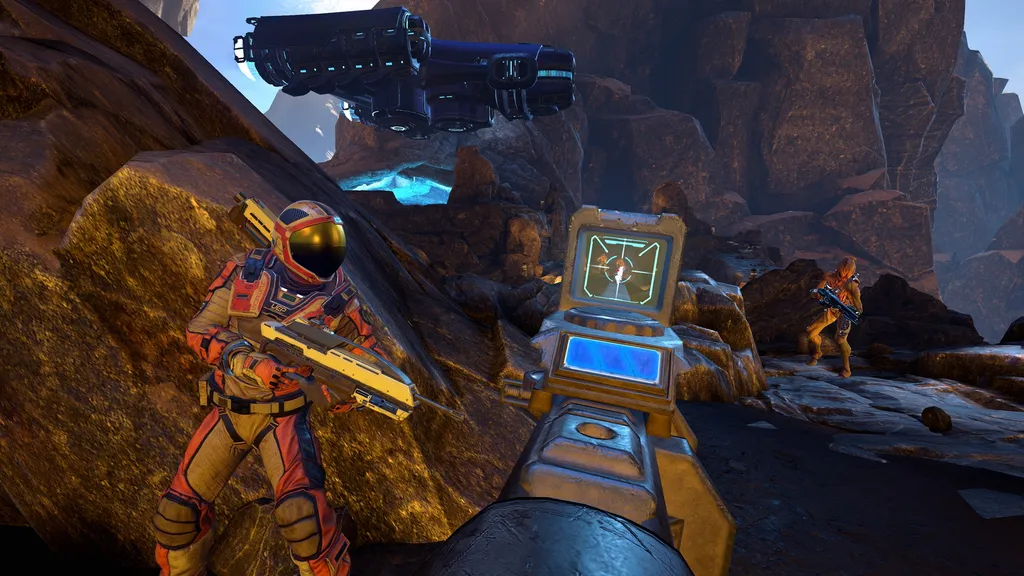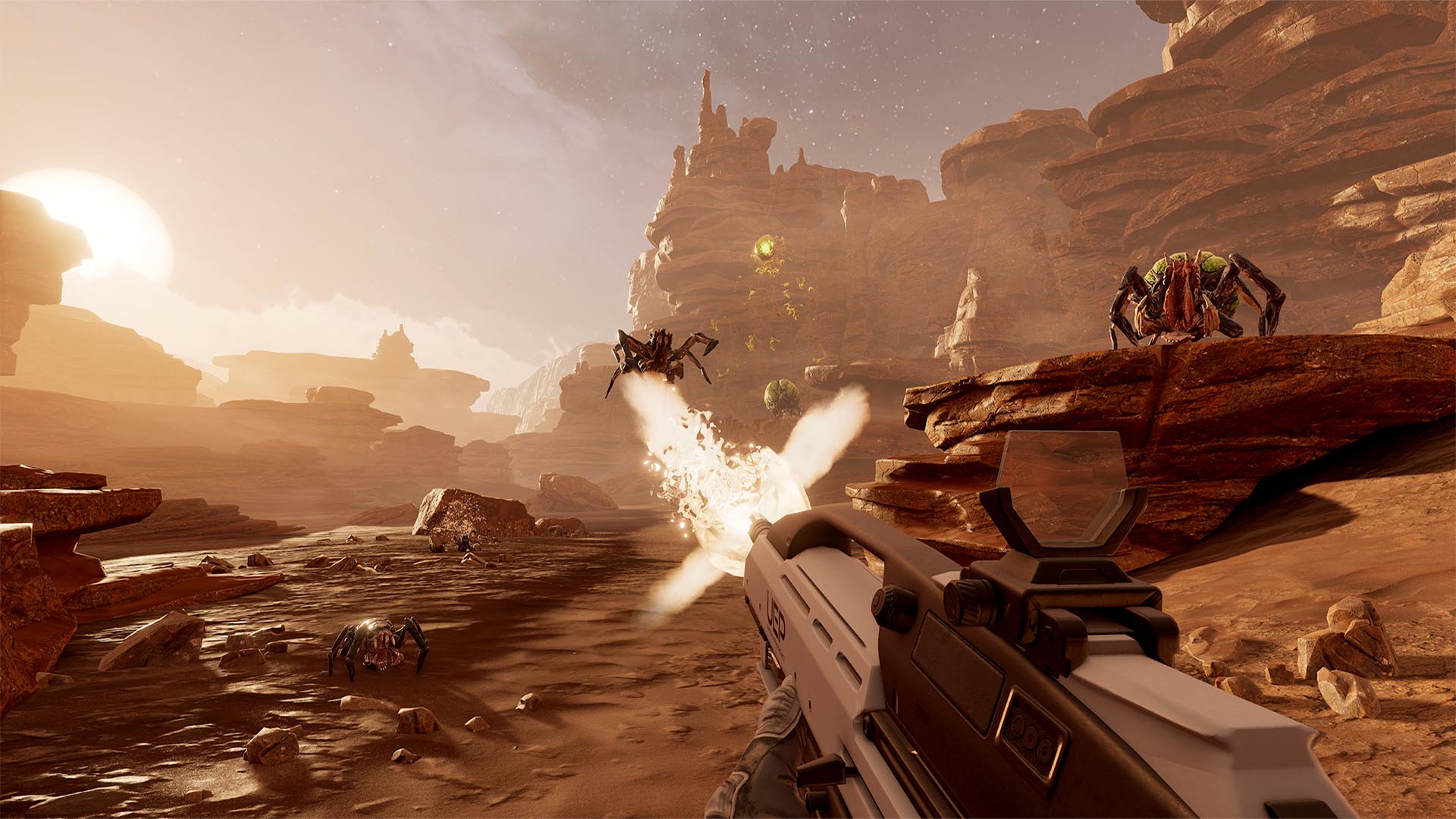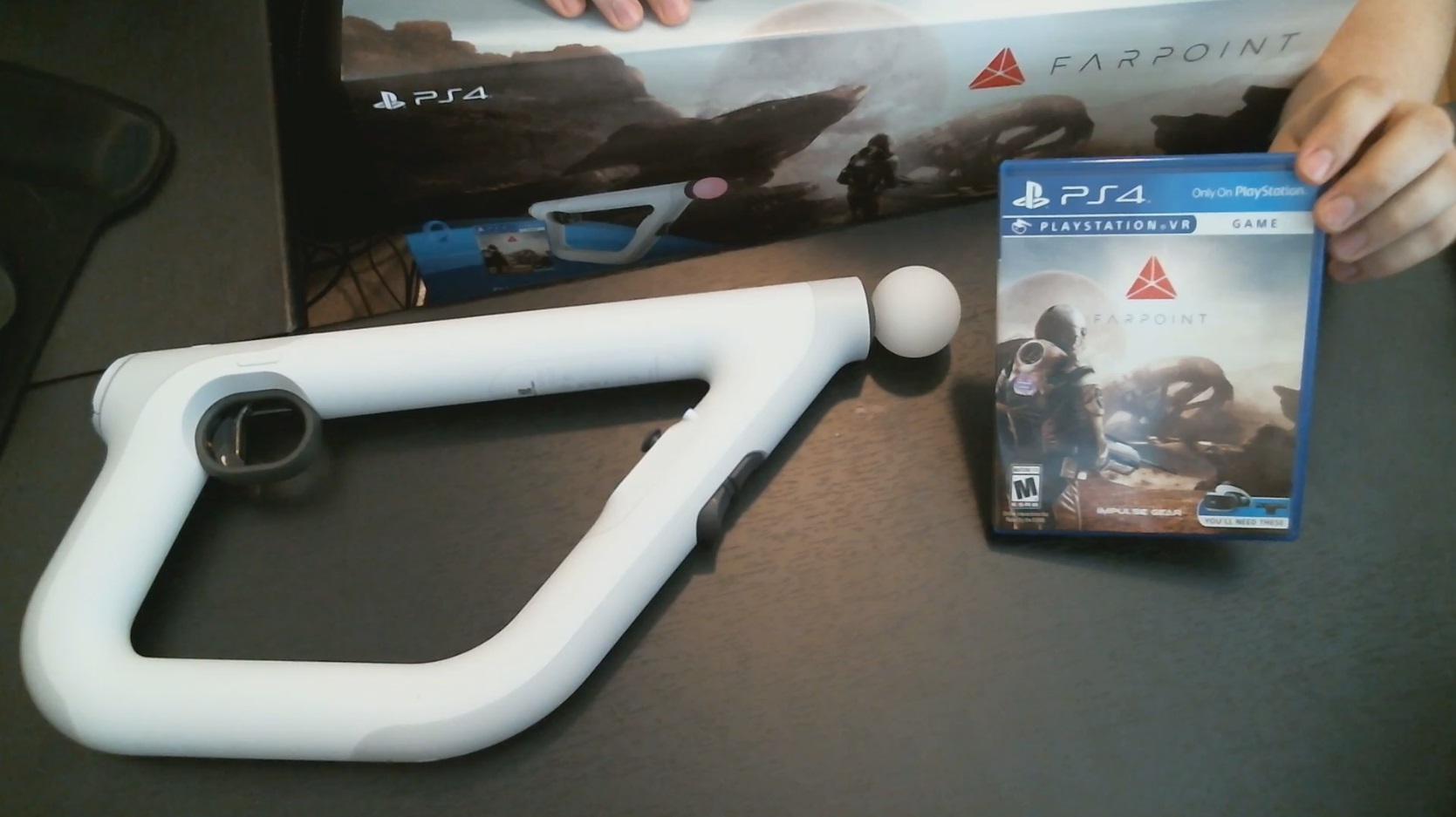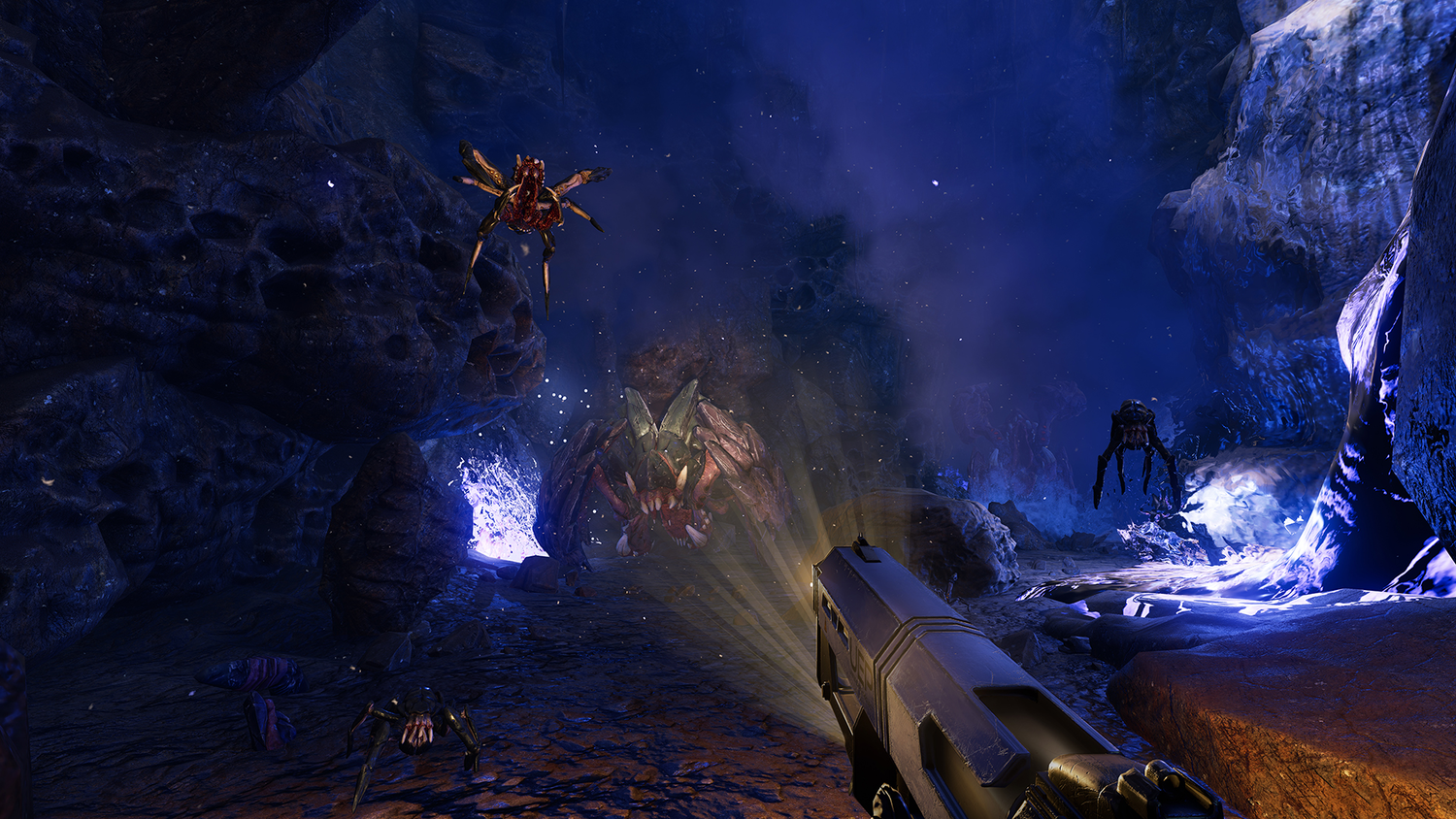This feature originally published in May, 2017. We’re republishing it in July, 2020 as a look back at one of the PSVR’s best games: Farpoint.
Farpoint, one of PlayStation VR’s most anticipated games, has just hit store shelves. You can read (and watch) our full review right here. Though Sony’s VR headset has had a decent first several months on the market, it can be argued the platform needs a few more exclusive, big-budget titles — games that PSVR enthusiasts can point to as valid examples of Sony’s commitment to this new technology. Developer Impulse Gear is looking to fill that void with one of the most promising VR shooters yet: Farpoint.
When Farpoint was first revealed at E3 2016, its stunning aesthetic and intriguing premise made it the biggest VR-only announcement at the show. Right out of the gate, Impulse Gear was promising players the chance to experience a full first-person shooter in VR, with an intriguing story, and even co-op and survival modes to boot.
Now, one year later, Farpoint could very well pave the way for similarly ambitious VR projects.
Researching The Galaxy
Farpoint’s story follows a scientific expedition crew studying an anomaly near Jupiter.
Of course, what starts out as a simple research mission devolves into a fight for survival, as a sudden rapture sends the crew onto a mysterious alien planet. You’ve to explore, battle against ghastly creatures, look for surviving crew members, and find a way to return home. Farpoint’s gorgeous setting, a Mars-looking planet filled with deadly desert landscapes and massive spiders, is what immediately stood out and enraptured viewers.
Impulse Gear had to do “lots of research” on various different planets and outer space in general in order to capture the particular feeling of being trapped on an unknown world. Not knowing what or who can kill you, including even the weather.
“For instance, it rains liquid methane on Titan and forms into lakes of liquid hydrocarbons,” said Seth Luisi, Founder, Impulse Gear. “A little closer to home, the blue glow of the Kawah Ijen volcano and lava streams in Indonesia.”
Luisi explained that the studio had to make sure it didn’t get carried away with how it portrayed Farpoint’s setting. The planet the game takes place in has to both feel foreign and eccentric, but also grounded in reality. With such a serious story Farpoint’s trying to tell, you simply can’t have a cartoonish depiction of alien life.
“In Farpoint, you end up on a planet in another Solar System far from Earth but it was important for us that everything be plausible,” Luisi said. “We incorporated many alien looking elements that are pulled from things that have been observed in our Solar System to make sure it wasn’t too alien.
“When creating the look for the planet, we wanted something that was alien but also relatable. After a number of concepts we settled on the current look. We found that if we made the planet feel too alien that it impacted immersion. Players felt more like they were actually there when it was an environment they understood.”
Changing The Way Shooters Are Played
Not only does Farpoint contain a 5-hour plus campaign, but there are also co-op maps and a challenge mode for players to try out. Making such a large amount of content for a relatively small team was no easy task, especially since Impulse Gear had plenty to figure out with making a first-person shooter work in VR. Aiming was one of the biggest issues the studio encountered, and it came up with quite the solution.
“The biggest challenge by far was figuring out how you could effectively play a first person shooter in VR,” Luisi said. “To achieve that, we prototyped and proposed to Sony what became the PSVR Aim controller. With the PSVR Aim controller we were able to make moving, shooting, and aiming more realistic, more skill-based but also much more intuitive and immersive.”
Of course, you can still play Farpoint using a regular controller (but we really weren’t fans of the scheme in the finished game). However, Impulse Gear had to completely rethink a decades-old approach to aiming. In console shooters, aiming is all about how well you control the analog sticks with your thumbs or mouse with your hand.
“A regular shooter is all about aiming the center of the screen at an enemy (or close to them),” Luisi said. “You would do this by ‘driving’ the center of the screen over the enemy using an analog controller or mouse and keyboard. For Farpoint, we threw all of that out. You aim at enemies by aiming the controller as you would in real life.
“It is much quicker and more accurate. You can quickly bounce between multiple fast moving enemies. How good you are at the game has a lot to do with how well you can aim the controller. It is the same skill that you would use in the real world.”
Impulse Gear hopes that its different approach to aiming, including completely throwing out aim assist, can impact and change the way first-person shooters are made.
“Having a tracked controller with 1:1 input that allows you to quickly, easily and accurately aim cannot be achieved any other way,” Luisi said. “We have no aim assist… we don’t need it. Your accuracy is all based on how well you aim the controller. This is the way first person shooter games are meant to be played and Farpoint will help change that forever.”
Luisi revealed that the idea to change the way shooters are played first came to him several years before Farpoint’s development, when Luisi was working at Sony and Zipper Interactive on some early controller prototypes. Of course, Luisi wasn’t able to actually execute on his ideas until VR first debuted.
“I wanted to figure out a better, more immersive and intuitive method for controlling first person shooter games,” said Luisi. “It wasn’t until VR hit a few years later that we founded Impulse Gear and we were able to pull all of the pieces together.”
Looking Toward The Future
For Impulse Gear’s first project, it was important to tell a poignant and personal story rather than creating an action spectacle.
“We wanted to do something very different with the narrative in Farpoint,” Luisi said. “Most first person shooters are fairly typical action movie style narratives. We wanted to focus on an intimate narrative that explores the human condition.”
But what the future holds for Impulse Gear is currently a mystery, including whether it decides to craft a more action-oriented blockbuster experience with its second project. Making a VR shooter was a great learning experience for the developer, from figuring out how to nail having two players onscreen at once in co-op without sacrificing performance, to crafting a believable alien planet that both looks and feels real.
With only 15 developers at Impulse Gear, Farpoint is a prime example of what the studio is capable of, and that players should expect more and more ambitious projects from the team in the near future.
Here’s our video review:
Farpoint is available starting May 16th as a standalone title for PSVR at the price of $49.99, or as a bundle with the Aim Controller for $79.99.































